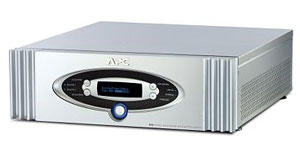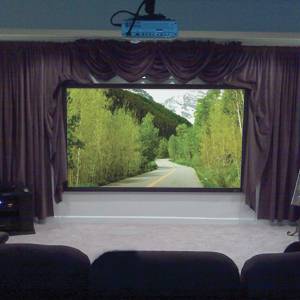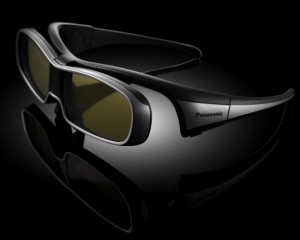
Why a Computer UPS Can’t Protect Theaters
 CIS-NC's Choice For APC and Panamax Line Conditioners Make sure to select a battery backup specifically designed for AV applications.
Power surges and transients occur in all 50 U.S. states. Blackouts, poorly filtered power, and dirty power can interrupt viewing, erase recordings and lose all of the system’s pre-sets. The recordings stored on your media server or DVR can be lost permanently if power is lost at just the wrong moment.
Satellite receivers and cable boxes can lockup, thereby interrupting service. Expensive light bulbs used in projectors and DLP TVs can be damaged when a blackout occurs.
The right battery backup can protect all of those troubles from happening. Many consumers look to their local mass retailer for one of those small, inexpensive battery backups designed for their home computer. While this might work out OK, there’s a good chance it simply won’t work.
Make sure to select a battery backup specifically designed for AV applications. Here are three reasons AV UPS (uninterruptible power supplies) systems offer better home theater protection.
Handling large components
One major difference is the ability to handle the unique power requirements of larger components. Network file servers and desktop computers typically have an in-rush current draw (the quick, but dramatic amount of current drawn when the device is turned on) of 60-80 Amps for a few milliseconds. Larger components can draw into the 100s of Amps (peak to peak) for several milliseconds on startup.
Computer UPS units are simply not designed to handle this large power draw. This can easily overwhelm the inverter of the UPS, causing it to shut down suddenly and unexpectedly. It is even quite possible for the UPS to be damaged by this overload condition. AV UPSs are designed to handle these large current draws common with big screen TVs and larger amplifiers.
Isolated Noise Filtration
Dedicated isolated noise filtration is another key aspect of AV equipment that is not typically available in computer UPS systems. Electrical Magnetic Interference (EMI) and Radio Frequency Interference (RFI) generally have little impact on computer gear unless its presence is extremely large (and/or the equipment is poorly shielded). For this reason, traditional computer battery backup products contain very small EMI/RFI filters.
If severe enough, EMI/RFI can negatively impact sound and video quality. Properly designed filters, as found in higher-end AV power protection units, can reduce or eliminate this interference so that consumer’s receive the best home theater experience their system can provide.
Too Noisy
Traditional computer UPS systems are too noisy, electrically and audibly, for AV equipment. Light emitting diodes (LED) and visual alarms that are typical of computer UPS systems can also detract from the viewing and listening experience. On the other hand, AV specific models are usually designed to be as quiet and visually unobtrusive as possible.
Audible alarms are “OFF” by default and LEDs can be dimmed or turned “OFF” altogether; similarly, liquid crystal displays (LCD) can be dimmed or turned “OFF”. AV cooling fans are micro-processor controlled with variable speed designed to run only when absolutely necessary.
Furthermore, the industrial design is ideal for placement in home entertainment centers (shelf or rackmount) or AV racks. Also, the UPS batteries are accessible through the front panel so the unit does not need to be removed from the equipment stack.
A true AV-specific battery backup can be a great complement to your system. Knowing you are protected from all the dangers and hassles of today’s unpredictable power grid should give you peace of mind so you can enjoy your home theater experience without interruption.
by Patrick Donovan
http://www.electronichouse.com/article/why_a_computer_ups_cant_protect_theaters/
Custom Installation Services, LLC – Audio/Video Sales, Service and Installation in North Carolina and South Carolina
Posted in Audio Systems, Flat Panel TV's, Home Theater, Line Conditioners, Media Rooms, News
|
Tagged audio advice, Best Buy, Charlotte apc surge dealers, charlotte nc architects, Charlotte panamax dealers, custom home builders in lake norman, HDTV, home audio consultation and design, home theater furniture, Home theater installers Lake Norman, home theater wiring, marantz dealers in Charlotte nc, Media Rooms, Mooresville, multiroom audio, surround sound, tv installation, Universal Remote programmers in charlotte nc, zobo
|
Sub-$6K Theater Delivers Satisfaction
 CIS - Charlotte's Source For Home Theater Installation/Design This budget-friendly home theater, and its 106-inch screen, provided the finishing touch to a finished basement.
One of the first things Phillip Thomas did after buying his 3,300-square-foot single-family home was finish the basement. He put in a bar, built a bedroom for his college-age son and threw in a nice-size bathroom. But he always felt that something was missing: a home theater.
“At the time, I thought that adding one would blow our budget out of the water,” Thomas says. So he and his family waited. After a few months of saving up, they contacted a local custom electronics professional for a quote. “They had a very firm budget of $10,000,” recalls Jason White of Commtech in Germantown, Md. “It was small, but it gave me some very clear parameters to work with.”
Since the basement was already finished and furnished, all of the money could go toward audio/video equipment and installation. That didn’t mean, however, that White could go crazy with the cash. “I had to be very careful about the products I selected,” he says. Obviously, the price of each component would need to fit the budget. But it was also important that the products chosen could be installed easily and would require minimal programming, White says. Oh, and the equipment would need to perform to the family’s expectations.
One of those expectations was a huge display. “I would settle for nothing less than 100 inches,” says Thomas. Consequently, the largest portion of the budget, $1,000, was allocated to a 106-inch projection screen from Draper. To avoid going over budget, fancy accessories like a motor that allows the screen to roll down from the ceiling were excluded.
A 720p Optoma projector finished off the projection system. Although it lacks the Full HD resolution of a 1080p model, it saved the Thomases more than $2,000. White made sure to run HDMI (high-definition multimedia interface) and extra Category 5 cabling to the projector location “just in case the Thomases ever decide to upgrade,” he says. The entire video setup came in at $2,000, which was about the same price as a much smaller 65-inch plasma or LCD TV.
White also stuck with the basics when it came to the audio/video receiver. The Denon AVR-590 is a quality piece, he says, but with one missing feature: HDMI upconverting. White explains, “A receiver with HDMI upconverting requires just one HDMI cable between the receiver and the projector. With it, any signal from any component will be upconverted to the 720p resolution of the projector.” The “HDMI switching feature” of the AVR-590, on the other hand, required White to route several additional cables from each component to the projector. The switching feature simply allows the signal from the connected source components to pass through to the projector without any enhancement in resolution. It was a minor sacrifice, White says, to save nearly $1,000.
Two fewer speakers would need to be purchased by going with a 5.1 surround-sound setup instead of a 7.1 system, and in-ceiling models would minimize the cost to have them installed.
“It’s usually easier to fish wiring through the ceiling to in-ceiling speakers than go through the ceiling and down the wall to install in-wall speakers because there are fewer obstacles,” says White. “It takes no more than five minutes to install an in-ceiling speaker compared to anywhere between 20 minutes to two hours for an in-wall model.” The 75-watts-per-channel rating of the five Proficient units may be less than the 100-watts per channel of the company’s higher-end units, but the Thomases saved $1,500 by sticking with the mid-grade models.
A final contributor to the savings was a stripped-down control device. The only two source components in the theater are a DirecTV satellite receiver and an upscaling DVD player, so the family didn’t need anything fancy, and so programming the URC MX-900 remote was basic.
Equipment
Draper 106-inch Onyx Matte White Screen ($999)
Optoma HD65 Home Theater Projector ($800)
Denon AVR-590 Home Theater Receiver ($350)
Panamax M4300 Power Manager ($249)
DirecTV HD Receiver (already owned it)
Samsung 1080P9 DVD Player ($90)
Proficient C660 LCR In-Ceiling Speakers ($580)
Proficient S10 Subwoofer ($249)
URC MX-900 Remote ($299)
Xantech IR Kit ($99)
Proconnect Cables ($420)
Consultation and Design Time ($1,500)
by Lisa Montgomery
http://www.electronichouse.com/article/sub-6k_theater_delivers_satisfaction/
Custom Installation Services, LLC – Audio/Video Sales, Service and Installation in North Carolina and South Carolina
Posted in 3D TV, Home Theater, Media Rooms, Music and Movies
|
Tagged 3-d, 3d, audio advice, basement theater, Best Buy, Charlotte, custom home builders in lake norman, HD installers in Charlotte nc, hd theater, high end audio, Home Theater, home theater furniture, home theater setup, home theater wiring, Media Rooms, Mooresville, Samsung, samsung ln46c650, tweeter charlotte, zobo
|
3D TV Roundup – Latest News On 3-D TV’s
 Anybody who kept track of the news and highlights from CES this year knows that, as predicted, one trend dominated everything else: 3D. And since you’ll need a new TV–and glasses!–to view the new 3D movies, games and TV programs, it follows that the main TV-related announcements all centered on 3D-compatibility. Anybody who kept track of the news and highlights from CES this year knows that, as predicted, one trend dominated everything else: 3D. And since you’ll need a new TV–and glasses!–to view the new 3D movies, games and TV programs, it follows that the main TV-related announcements all centered on 3D-compatibility.
But before I get into the nitty-gritty of actual announcements, it’s worth taking a step back for some perspective on 3D. Here are a few general things to remember as you sift through 3D coverage from the show.
-The first 3D TVs should ship in “spring” of this year–likely later rather than earlier–at which time we’ll publish reviews. Until then we can’t say how they’ll actually perform in the real world. The models shown at CES were not final versions, and their picture quality in show demos is subject to change.
-The 3D TVs announced at the show are the most expensive in their respective manufacturers’ product lines, although we don’t expect them to cost much more than current high-end models. Aside from Vizio, nobody announced pricing on any 3D TVs.
-The new 3D TVs use technology that’s similar to what’s seen in IMAX 3D and other commercial 3D theaters, and it’s superior to the technology typified by the cardboard glasses with color filter lenses.
-As far as we know, there’s no way to upgrade ANY current HDTV to be compatible with the new 3D display technologies. Update: Mitsubishi announced an adapter box that would enable their current and older 3D-capable, DLP-based rear-projection models to work with 3D.
-You can watch normal TV and HDTV on a 3D TV with no problem.
For a true 3D experience, you’ll need new 3D content, whether it’s a 3D TV channel, a 3D Blu-ray Disc, or a 3D video game. No such content is widely available now, and small amounts will trickle out throughout 2010. (The first 3D TV channels will likely be on DirecTV in June).
-Not everyone can enjoy the 3D experience, and many people cannot see 3D at all or suffer headaches or other ill effects from it. We recommend anyone who’s considering a 3D TV to first watch a few 3D movies in the theater to see how it works for them. Then remember that TVs are a lot smaller.
All of the CES announcements are subject to change, and most will certainly be modified as the year progresses.
Now that that’s taken care of, let’s check out the major TV announcements.
We’ll start with Panasonic, since that company’s 3D TV, the TC-PVT25 series, scored our “Best in Show” award this year. The set includes glasses (pictured at the top) and should be among the first 3D TVs to come to market in 2010. We’re actually even more excited about the potential of its black-level performance, judging from specs and some brief eyes-on time we had at the booth, to perhaps rival that of the good old Pioneer Kuro. The step-down, non-3D G20 and G25 series models should have identical black levels as the VT25, again judging by their specs.
LG and Samsung also proffered plasmas at the show, and while only Samsung promised 3D compatibility, both included new filter technologies that used the word “black” on some models (LG PK750 and PK950; Samsung PNC8000)–so perhaps Panasonic will face a stiffer challenge than last year in the important black-level department. Notably, all plasmas announced at the show (including a 65-inch Panasonic) are Energy Star 4.0-compatible, which leads us to believe that the new blue sticker is as easy to achieve as it was under 3.0.
Scads of LCDs were announced–with numerous 3D models–but we were able to cover only a fraction of them. Every major TV maker will have new LED-based models, some in a confusing array of new backlight technologies beyond simple edge-lit vs. local dimming.
Samsung, the king of new LED/LCD technology, was mum on the specifics of its new LED system (found on the UNC7000 and UNC9000 models, among others), although we do know it relies on edge-lighting, not a full array of LEDs behind the screen as on the excellent 8500 series. The flagship 9000 models should be among the thinnest TVs available, for what that’s worth.
LG divulged more about its LED tech, and two of its models (the slick LE9500, a Best Of nominee, and the LE8500) employ “detailed” local dimming, whereas a third (the LE7500) gets the so-called “basic” variety. Sony announced a slew of models but we had time to cover only the two high-end “XBR” sets (the LX900 and HX900). One has local dimming and the other does not. Vizio’s XVT Pro models and Toshiba’s Cell TV (the third Best Of nominee) will likely bracket the price range, at the low and high ends, respectively, of the well-featured, local-dimming models available this year.
Display technology trends were augmented by scads of new interactive announcements at the show. LG and Panasonic will support Skype video/voice calls on their interactive models; Samsung will launch an App store that works “across devices,” (see the LC750 writeup for what few details we have); Netflix will be added to Panasonic’s VieraCast service (but only for 2010 models) as well as to Vizio’s new “Via” interactive service; and Vudu will launch its own “apps” on select Mitsubishi, Sharp and Toshiba models (see the current Mitsubishi LT-249 review for a taste), in addition to its standard VOD service on just about every TV brand save for Sony and Panasonic (which use Amazon VOD instead). Many interactive TVs will have built-in Wi-Fi, while optional Wi-Fi dongles will be available for most others. New input schemes, including a touch-screen remote from Samsung, a Wii-like clicker from LG, and the capability to plug in a USB keyboard from Panasonic, should make using those services easier.
Between 3D, new display technologies and the interactive TV deluge, 2010 is already shaping up to be one of the most confusing years in new TV technology yet–and that’s saying something.
by David Katzmaier
http://ces.cnet.com/8301-31045_1-10433127-269.html?tag=rtcol
www.cis-nc.com
Posted in 3d movies, 3D TV, Blu-ray, Flat Panel TV's, News, technology
|
Tagged 3d theater in charlotte, charlotte hd installers, charlotte tv installation, hi fi in charlotte, home theater electronics, home theater furniture, home theater wiring, Lighting control dealers in lake norman, marantz dealers in Charlotte nc, Mooresville, smart house in charlotte, whole house audio
|
|
|
|






